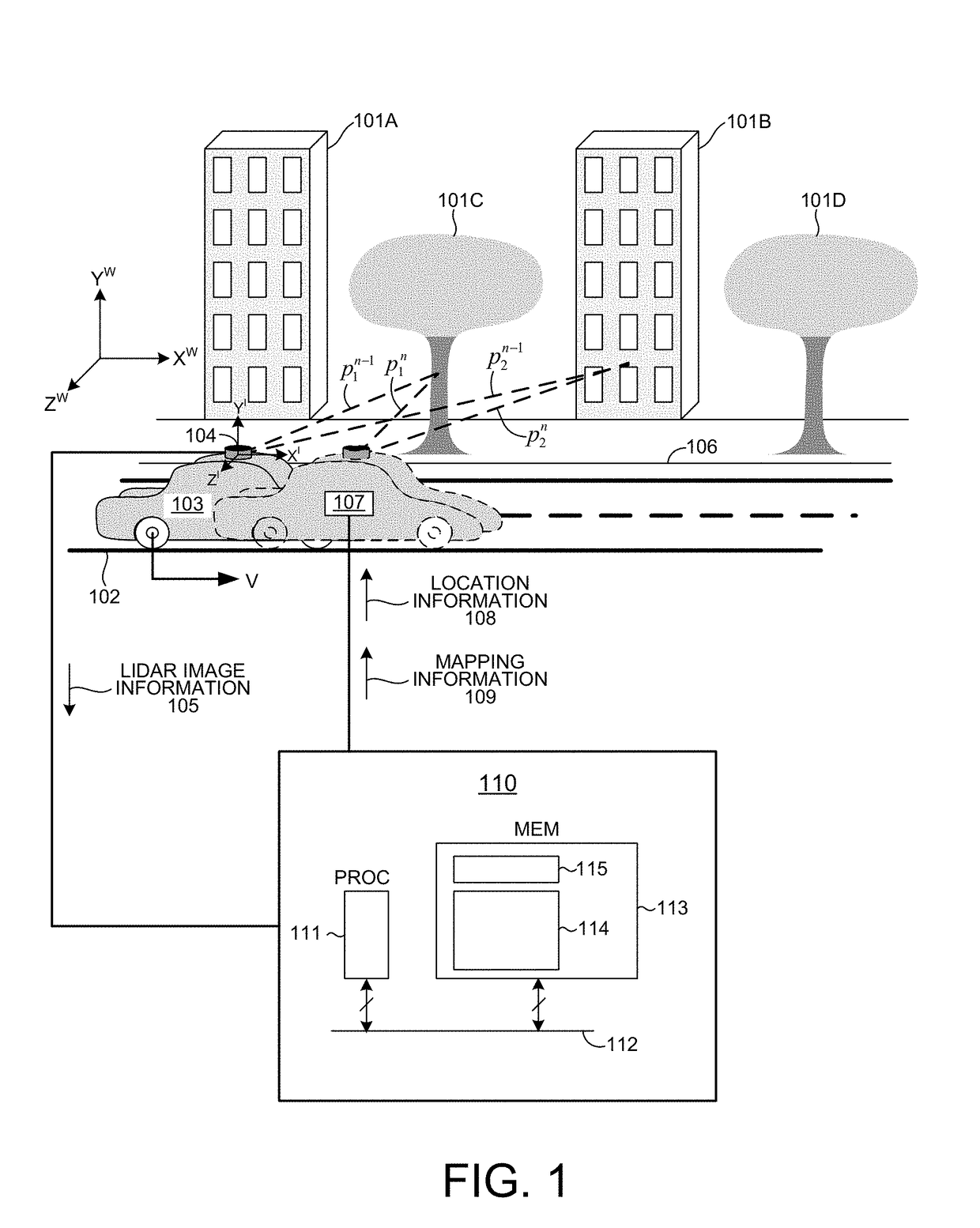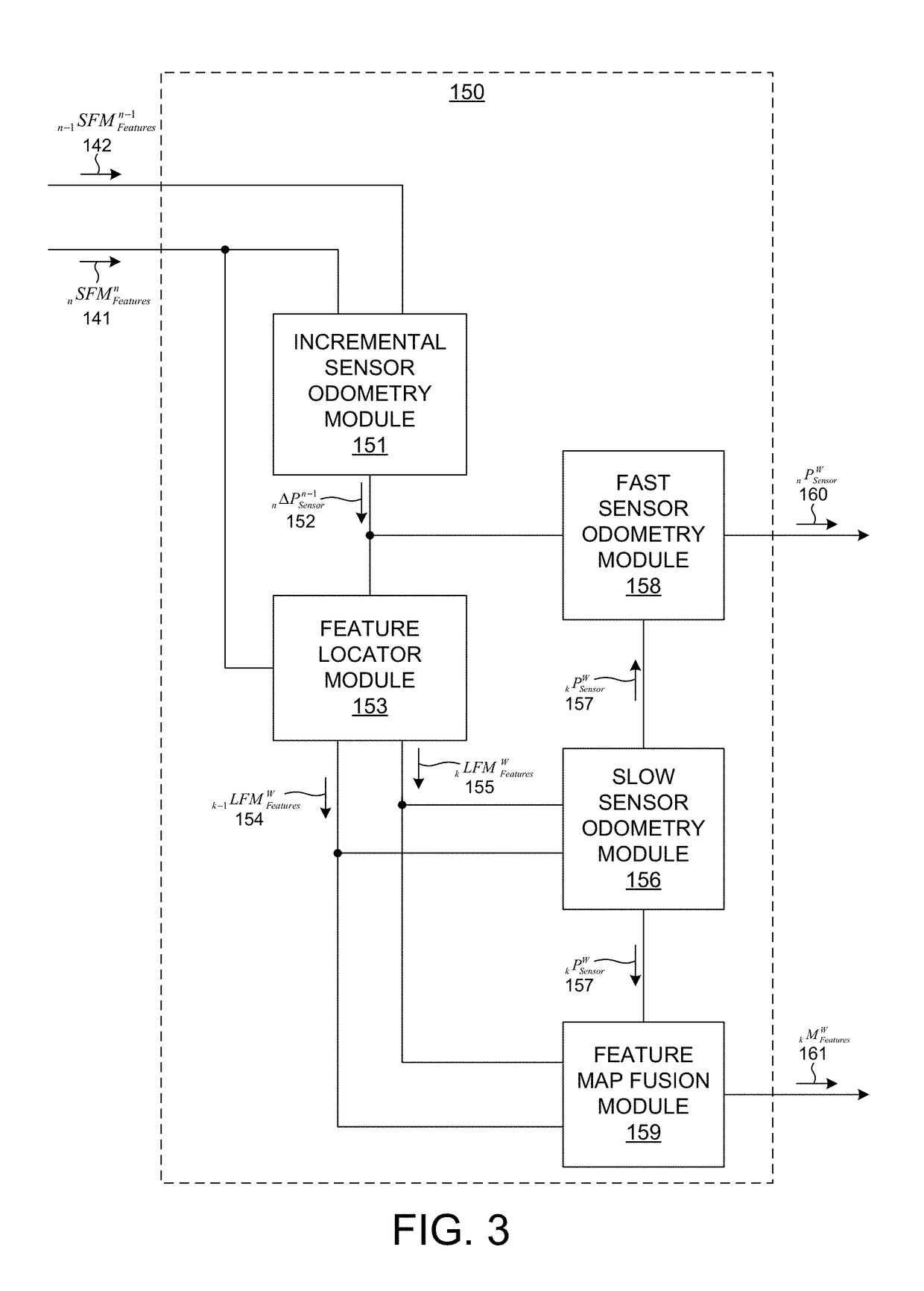Multiple Resolution, Simultaneous Localization and Mapping Based On 3-D LIDAR Measurements
a lidar and point cloud technology, applied in the field of multi-resolution, simultaneous localization and mapping based on 3-d lidar measurement, can solve the problems of limited application to well controlled indoor environments, slow moving operational scenarios, and inability to accurately map and localize objects, so as to reduce the amount of data associated with each image frame, improve computational efficiency, and maintain both mapping and localization accuracy
- Summary
- Abstract
- Description
- Claims
- Application Information
AI Technical Summary
Benefits of technology
Problems solved by technology
Method used
Image
Examples
Embodiment Construction
[0037]Reference will now be made in detail to background examples and some embodiments of the invention, examples of which are illustrated in the accompanying drawings.
[0038]Methods and systems for improved simultaneous localization and mapping based on 3-D LIDAR image data are presented herein.
[0039]Simultaneous localization and mapping (SLAM) involves building a consistent three dimensional geometric map of the environment traversed by a LIDAR measurement system while estimating the position of the LIDAR measurement system within the environment in six degrees of freedom (e.g., x, y, z, Rx, Ry, Rz) in real time. SLAM analysis is performed based on the point cloud distance measurement data generated by a LIDAR measurement system.
[0040]FIG. 1 depicts an operational scenario including a LIDAR based, three dimensional imaging system 104 and a computing system 110 configured to simultaneously map the surrounding environment and locate the LIDAR measurement system 104 within the environ...
PUM
 Login to View More
Login to View More Abstract
Description
Claims
Application Information
 Login to View More
Login to View More - R&D
- Intellectual Property
- Life Sciences
- Materials
- Tech Scout
- Unparalleled Data Quality
- Higher Quality Content
- 60% Fewer Hallucinations
Browse by: Latest US Patents, China's latest patents, Technical Efficacy Thesaurus, Application Domain, Technology Topic, Popular Technical Reports.
© 2025 PatSnap. All rights reserved.Legal|Privacy policy|Modern Slavery Act Transparency Statement|Sitemap|About US| Contact US: help@patsnap.com



